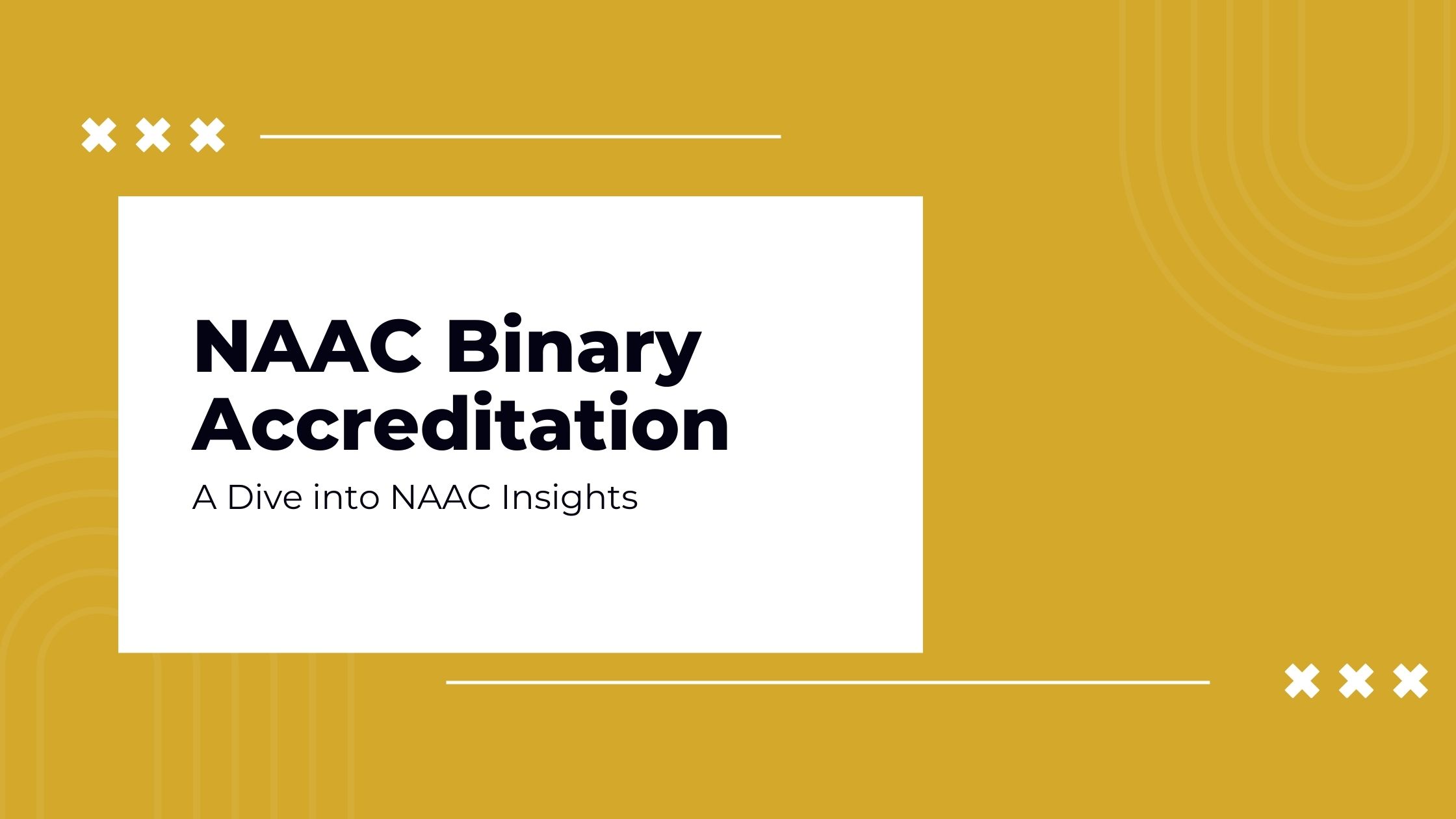Kramah Software LLC
Accreditation Management Services, AI enabled Customized Software for your Institution
Exploring Binary Accreditation Dynamics:
A Dive into NAAC Insights
By, Mahima Jagadeesh

In the realm of education, accreditation serves as a hallmark of quality and excellence, ensuring that educational institutions meet rigorous standards. As educational institutions gear up for the latest accreditation process, it’s crucial to delve into the intricacies of the Binary Accreditation system introduced by the National Assessment and Accreditation Council (NAAC).
Balanced Weightage
- Input holds a significant 25% weightage, while Process and Output collectively carry 75%, highlighting the importance of planning and execution.
Adaptation Challenges
- With 50-60% of new metrics introduced, institutions face the task of realigning their processes to meet the evolving standards, aiming for excellence across all metrics.
Complexity Unveiled
- Contrary to expectations, the new system isn’t simpler; instead, it poses greater complexity, demanding a thorough understanding and strategic approach from higher education institutions (HEIs).
Minimal Expert Visits
- Unlike traditional accreditation methods, the Binary Accreditation system may not entail expert visits, potentially reducing associated fees.
Grading Evolution
- CGPA and grading systems are replaced with Good, Concern, and Weak metric categorisations, providing a more nuanced evaluation framework.
Strategic Timelines
- A strategic window from late May to mid-June allows HEIs to submit Initial Institutional Quality Assessment (IIQA) reports and choose between existing framework or binary accreditation options.
- IIQA submissions will be paused for 2-3 months starting from mid-June, emphasizing the importance of timely planning and action.
Accreditation Milestones
- By December 2024 or January 2025, institutions will be prequalified based on levels ranging from Level 1 to Level 5 Accreditation, reflecting their commitment to quality and excellence.
Comprehensive Evaluation Domains
- Institutions will be evaluated across ten inputs including Curriculum Design, Faculty, Infrastructure, and Finance; eleven processes encompassing Learning & Teaching, Extended Curricular Engagement, and Governance; and twelve outcomes covering Student Outcomes, Research and Innovation, and Sustainability.
Diverse Institution Types
- Institutions are classified as U-University, AU-Autonomous, and AFF-Affiliated, each with unique accreditation considerations and pathways.
As institutions navigate the intricacies of the Binary Accreditation framework, proactive engagement, strategic planning, and a commitment to continuous improvement will be instrumental in achieving and sustaining accreditation excellence.
Conclusion
The Binary Accreditation system introduced by NAAC brings about a paradigm shift in the accreditation process, emphasizing adaptability, comprehensive evaluation, and strategic planning. While it presents challenges, it also offers opportunities for institutions to demonstrate their commitment to quality education. By embracing these dynamics and engaging proactively, educational institutions can navigate the accreditation journey successfully.
FAQs
How does the Binary Accreditation system differ from traditional methods?
Unlike traditional methods, the Binary Accreditation system emphasizes a more nuanced evaluation framework with categorizations like Good, Concern, and Weak metrics instead of CGPA.
What are the key challenges institutions face in adapting to the Binary Accreditation system?
Institutions often struggle with realigning their processes to meet the evolving standards, especially with the introduction of new metrics and increased complexity.
Are expert visits still a part of the accreditation process under the Binary Accreditation system?
While expert visits may not be mandatory under the Binary Accreditation system, institutions may still opt for them for additional validation and feedback.
How can institutions ensure timely planning and action under the Binary Accreditation system?
Institutions should utilize the strategic timelines provided, ensuring timely submission of Initial Institutional Quality Assessment (IIQA) reports and proactive engagement in the accreditation process.
What are the implications of achieving Level 5 Accreditation under the Binary Accreditation system?
Level 5 Accreditation signifies the highest level of commitment to quality and excellence, reflecting positively on an institution’s reputation and standing within the educational landscape.